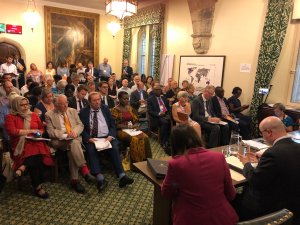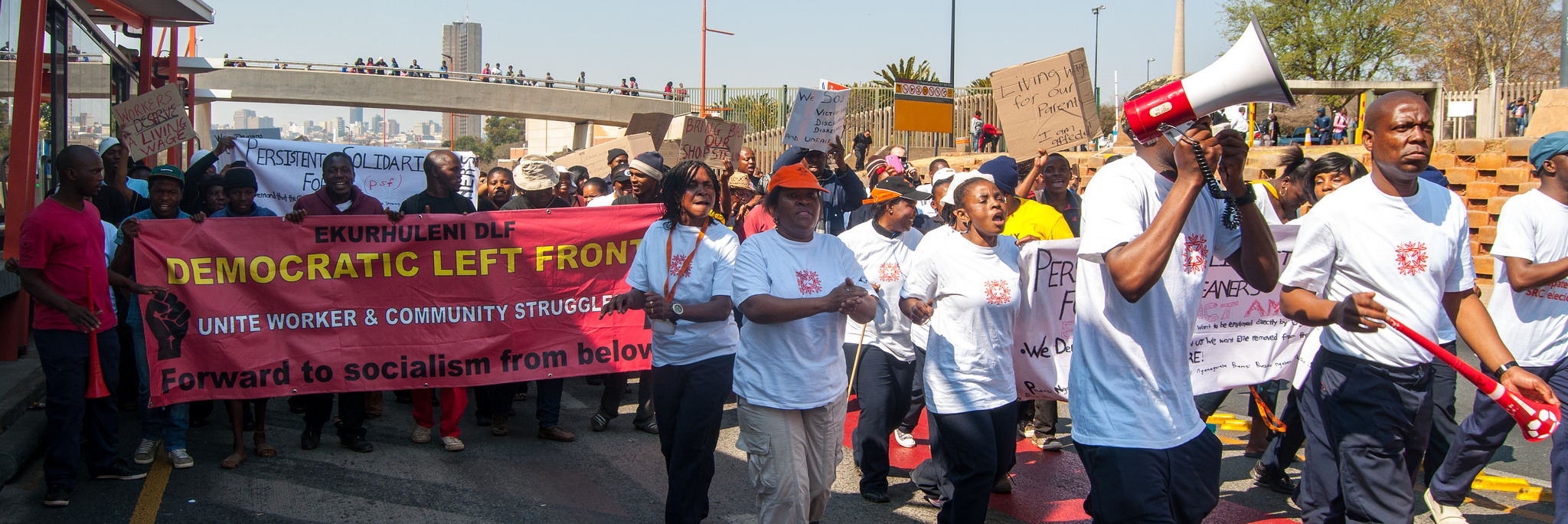This month’s State of the Nation Address (SONA) by President Cyril Ramaphosa and Wednesday’s budget statement by Tito Mboweni (Minister of Finance) have together highlighted the urgent need for reconstruction in South Africa. This week, students on my undergraduate module ‘South African Politics: from Apartheid to Democracy’ are looking at reconstruction in post-apartheid South Africa and therefore I decided to post some thoughts on what lessons we might draw from these recent announcements.
The latest government strategy is the Economic Reconstruction and Recovery Plan (ERRP), which was published in October 2020. This plan fits comfortably within a much longer trend in policymaking that I identified in an article published in Capital & Class in 2017. An approach based on creating an investor-friendly environment to try and generate economic growth, has been at the core of the ANC government’s macroeconomic strategy, ever since it launched its Growth, Employment and Redistribution (GEAR) plan in 1996.
It is strikingly clear, however, that such an approach has failed to deliver human development for the majority of South Africans. Before the Covid-19 pandemic hit South Africa, it was already facing serious development challenges. The legacies of apartheid have remained visible in the period since the first multi-racial election was held in April 1994. A key explanation for this is the bargain struck in the early 1990s by the African National Congress (ANC) during the negotiated transition. Patrick Bond’s analysis of the series of compromises reached during this period remains instructive for understanding the contemporary situation. Bond argues that “ANC leaders were not ‘constrained’ in the 1990s by a desire for economic stability but entered into a pact with Afrikaner nationalists and big business”.
As a result, the structural legacies of apartheid endure. The Covid-19 pandemic has deepened the pre-existing dual economy. For the final quarter of 2020, South Africa’s unemployment rate is reported as 42.6 per cent (using the expanded definition that includes people who are discouraged from seeking work). To put this into context, concerns were recently expressed in the media that the UK’s unemployment rate has risen to 5 per cent for the first time in nearly five years. South Africa also has staggering levels of wealth inequality when compared to other countries. A recent report by Aroop Chatterjee, Léo Czajka and Amory Gethin on inequality, concluded that in South Africa “the top 10 per cent own more than 85 per cent of wealth, and the top 0.1 per cent at least 25 per cent”. The report also notes that there has been no discernible decrease in inequality since the end of apartheid.
At the heart of the SONA speech was a reinforcement of the centrality of the ERRP in addressing South Africa’s economic challenges. Ramaphosa is not oblivious to the challenges facing the country and he acknowledged the need to overcome poverty, hunger, joblessness and inequality. He went on to outline the four central elements of the government’s recovery plan:
- A huge rollout of infrastructure projects focused on areas such as water and improvements to the road network.
- A focus on local production based on a commitment to buy local and a boost to exports .
- A government stimulus package to create jobs combined with measures to make it easier for the private sector to do business.
- Measures to address the capacity problems in the domestic energy sector and in particular a restructuring of Eskom, which is the state-owned electricity provider.

This ‘new’ development strategy draws on discussion papers that were produced by the Treasury before the impact of the pandemic in August and October 2019. In turn, these built on the analysis at the heart of the National Development Plan, which was launched in 2012. The message outlined by Ramaphosa appears to be a renewed focus on implementation, rather than a radically different strategy. The aim is to create the conditions in South Africa that are conducive to the needs of capital, which it is argued will generate higher levels of economic growth that will in turn begin to resolve the economic divide. In July 2020, South Africa made a successful request to the IMF for emergency financing worth US$ 4.3 billion. In the letter of intent to the IMF the Minister of Finance and Governor of the Reserve Bank made it clear that South Africa will focus on fiscal consolidation to ensure its debt is stabilised. This was evident in the budget, which saw a real-terms cut in social grants. At the same time, it was announced that the corporate tax rate will be reduced from 28 per cent to 27 per cent in April 2022.
So, what alternative measures could be adopted to help close the inequality gap and create jobs that are compatible with the challenge of climate change?
In response to the pandemic, the government introduced a temporary Social Relief of Distress Grant for those not already in receipt of any other social grant. Recipients receive R350 per month and this scheme has recently been extended until the end of April 2021. The decision to provide this grant, which it should be noted is below the level of the national food poverty line of R585 per month, has re-opened a debate in South Africa about a Basic Income Grant (BIG). This was something that a coalition of social movements campaigned for in the early 2000s. There are compelling arguments in favour of introducing a BIG to provide economic security for all. It was rebuked by government in the past on the grounds that it would create dependency and reduce the incentives to work. However, as Dawson and Fouksman have argued, it makes no sense to “keep expecting the poor to receive money through work only, when work is unavailable, or unstable and badly paid”.
However, the introduction of a BIG in isolation from other radical measures would only help to reduce the more extreme levels of poverty in South Africa. Inequality will persist without a significant redistribution of wealth and changes to land ownership. Chatterjee, Czajka and Gethin’s work on wealth – not income – inequality leads them to conclude there is a need for a wealth tax. They propose a progressive tax on the top 1 per cent of South Africans, which they estimate would raise R143 billion. To put this figure into context, in the budget this week, total government revenue for 2020-21 is estimated at R1,363 billion. South Africa also needs to move away from its reliance on extractive industries to begin a just transition towards a low carbon economy. Proposals published by the Million Climate Jobs Campaign and Alternative Information and Development Centre provide an interesting roadmap for how this might be achieved.
During the SONA, Ramaphosa made frequent reference to the recovery plan being based on a social compact. Within the National Economic Development and Labour Council (NEDLAC), social partners (business, labour and community) were reported to have agreed upon a Social Compact on Economic Recovery in September 2020. NEDLAC is a corporatist bargaining forum that is often bypassed in the policymaking process. However, the government have claimed that on this occasion the Social Compact has directly informed the ERRP. The problem is that with such high levels of unemployment coupled with those who are in casualised or informal work, established trade unions are not representative of the interests of the poor majority in South Africa. Despite the Social Compact, the Minister of Finance still felt the need to tell ‘social partners’, on more than one occasion during his budget speech, that he was not delivering an austerity budget. In an attempt to raise the wider issues at play, the South African Federation of Trade Unions (SAFTU), which is a group of unions that has broken away from the ANC-aligned Congress of South African Trade Unions (COSATU), organised a general strike on budget day. SAFTU was formed in 2017 but remains outside of discussions within NEDLAC.
A society with such stark levels of poverty, inequality and unemployment is not a ‘good society’. It breeds crime, resentment and fear. Ultimately, it remains an ongoing tragedy that the aspiration of freedom, which was at the heart of the liberation struggle against apartheid, remains out of reach for millions of South Africans due to entrenched economic divisions.


